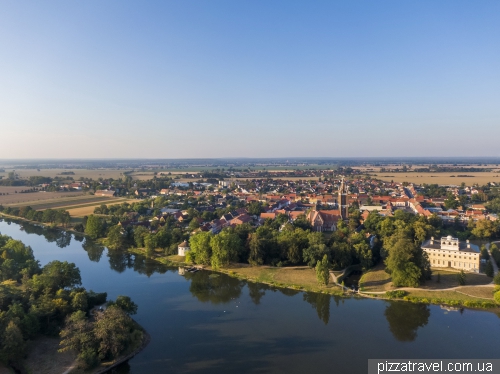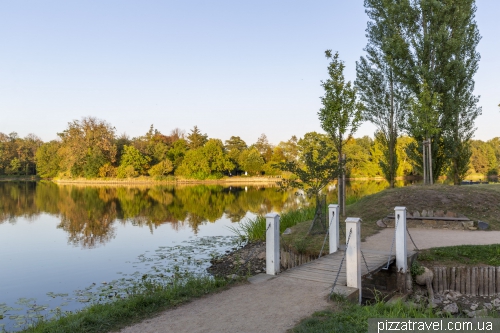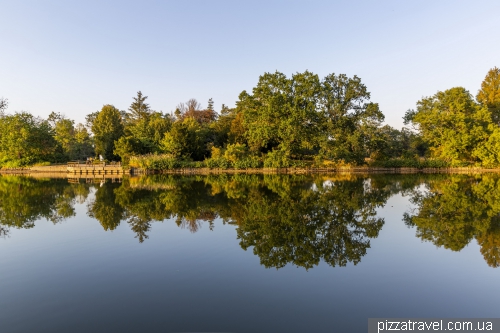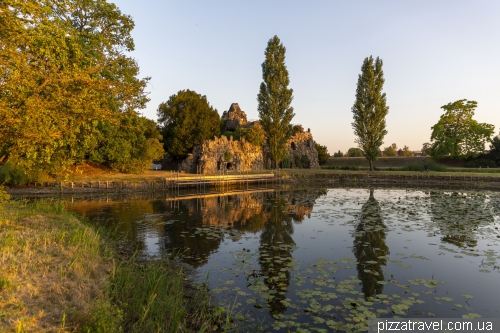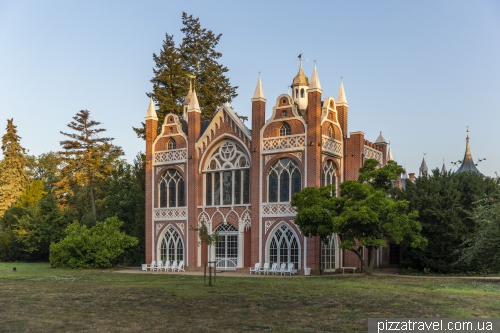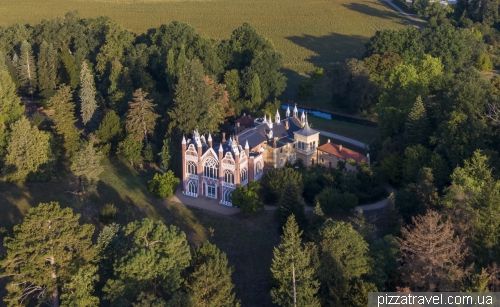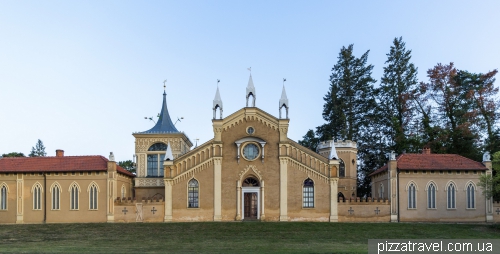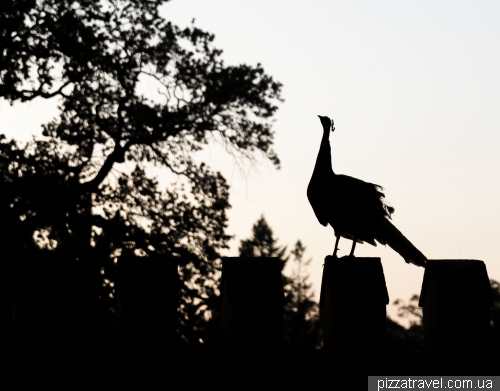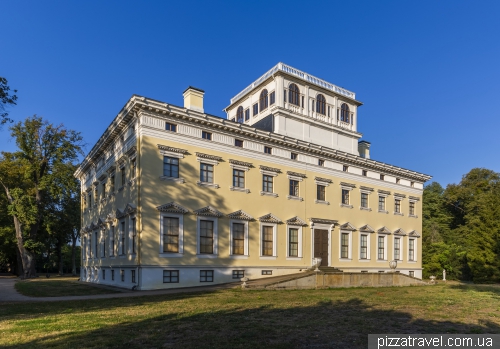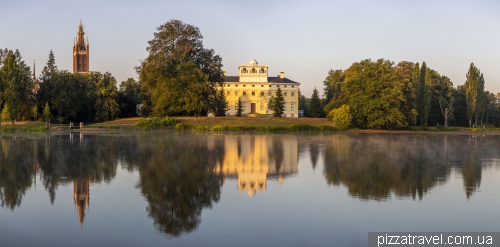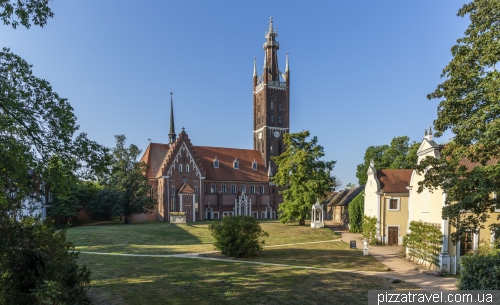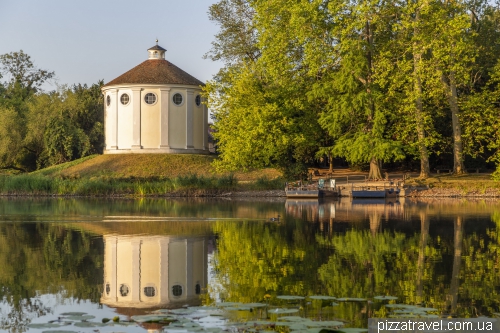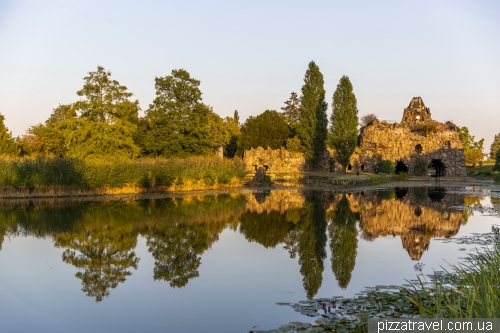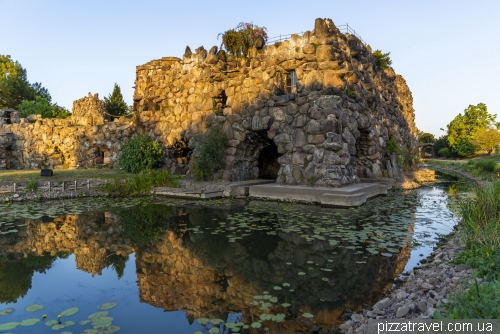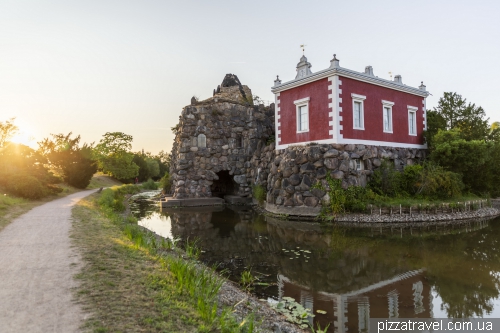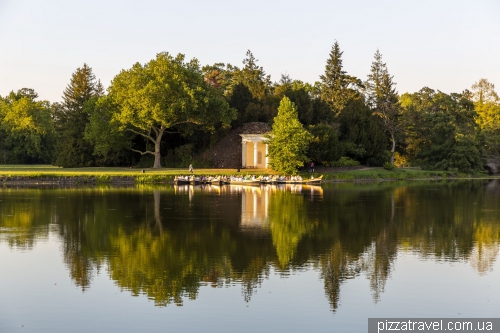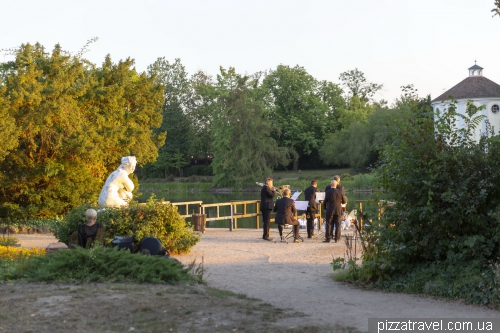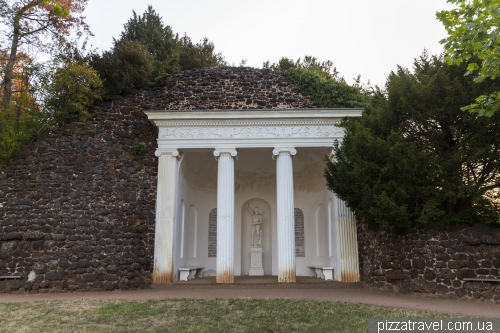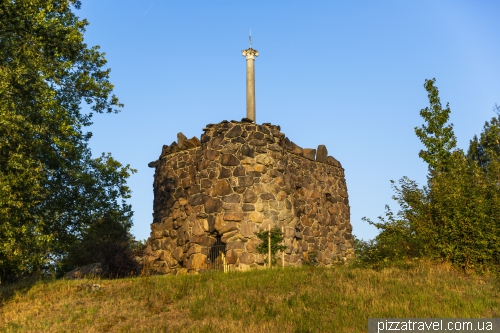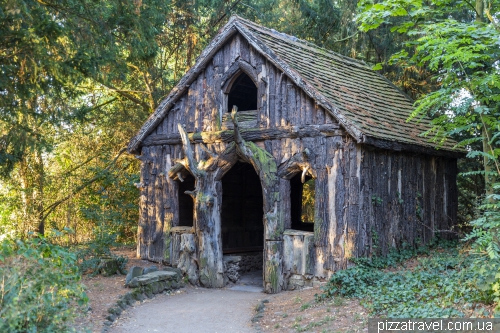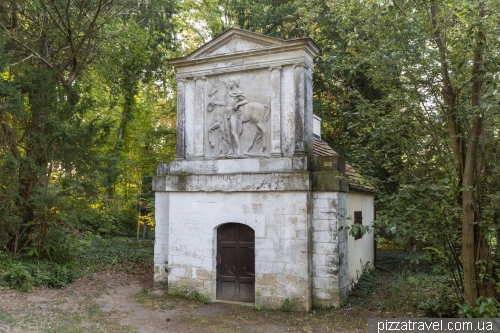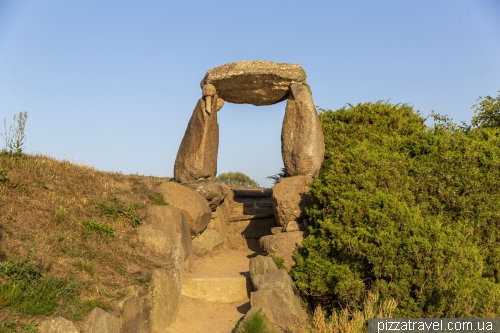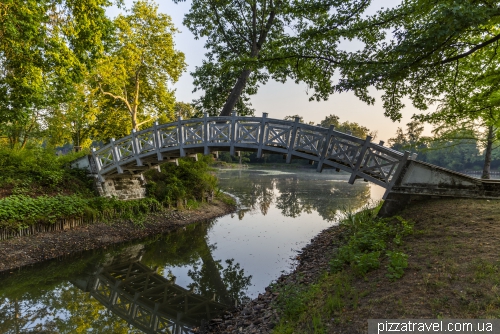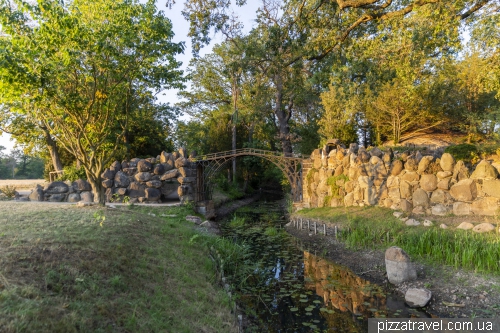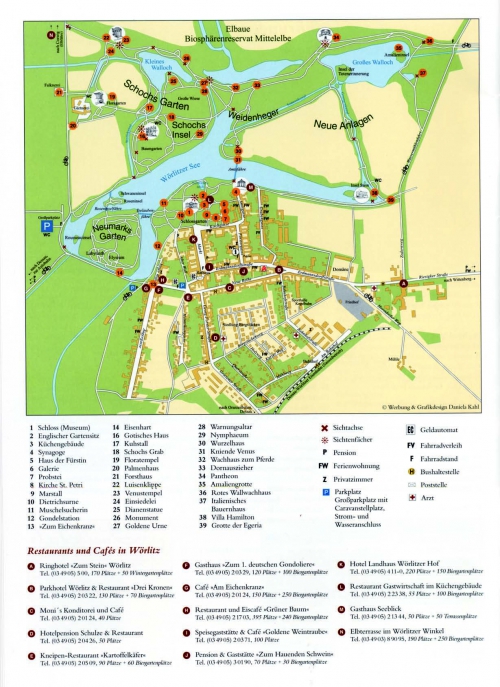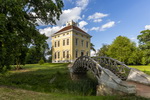The park was founded in 1769 - 1773 and became one of the first English-style gardens on the continent. What is very unusual for its time, it was originally planned as an open park, where visitors can study architecture, gardening and agriculture. Actually, now you can walk in the park at any time, admission is free. Get ready to walk a lot, only a sightseeing trail around the lakes is about 10 kilometers.
In 1774, one of the first neo-Gothic buildings in Europe appeared in the park.
Peacocks live here
In 1773, a palace was built in the park, the residence of Prince Leopold III (Friedrich Franz von Anhalt Dessau), who founded the park. It was the first building in the neoclassical style in modern Germany.
Louise, the wife of Prince, had her own residence, which was called the Gray House (Graues Haus). In the next photo, it can be seen to the left of the cathedral. The building is so unremarkable that I did not even photograph it.
The neo-Gothic church of St. Peter was completed in 1809.
In 1790, a synagogue (Wörlitz Synagogue) was built on the lake. Prince Leopold was an admirer of the Enlightenment and thus showed a tolerant attitude to different religions and architectural styles. For patronage of the sciences and the arts, as well as religious tolerance for Jews, the prince enjoyed great authority in Germany.
The synagogue survived Kristallnacht, the Jewish pogroms that Hitler organized from November 9 to 10, 1938. It was rescued by the park ranger, who lost his job afterwards.
An unusual structure is located at the eastern end of the lake. If I give you 100 attempts to guess what it is, I think you can’t do it.
We were sure that it was just a grott. But it turned out that this is an artificial volcano, the only one in Europe. It was built by Leopold under the impression of the volcano Vesuvius, which he saw in Naples.
The volcano still operates today. In August, during the festival, it is launched for the audience. We were in the park during the festival, though we did not know about the volcano. Please note that viewers are sitting on boats and move from performance to performance.
The park also has replicas of Roman temples and buildings of other eras.
To take evening and morning photos, we specially spent the night in the park, in the hotel Zum Gondoliere (booking.com).
Getting there: parking N 51 50.661 E 12 24.894. The Wörlitz train station is 1 km from the park. The bus stop Wörlitz Neue Reihe, Oranienbaum-Wörlitz is closer, use bahn.de.

